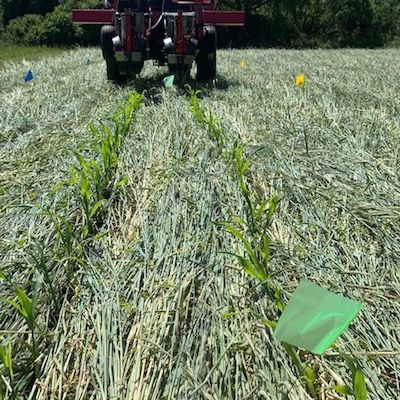Often organic farming is criticized for using too much tillage as a method for weed control and for terminating one crop to prepare for another. This is especially true for organic vegetable growers.
Although no-till techniques have been developed and proven financially successful for small acreage growers using a lot of labour, there has not been much work done on scaling up no-till techniques for mid and larger sized operations that use more machinery to reduce the labour inputs.
To tackle this problem, Ken Laing of Orchard Hill Farm near St.Thomas is working in cooperation with EFAO to trial a wide variety of no-till methods for organic vegetable production. Over the next 3 years, Ken will be looking at spinach, peas, beans, sweet corn, tomatoes, sunflowers and garlic using three different planting situations:
- Into winter killed cover crops;
- Into deep compost mulch; and
- Into roller/crimped terminated cover crops.
Some crops will be seeded, some transplanted and some both. The techniques that show the most promise in side-by-side plots the first year, will be explored further using replicated plots in the following 2 years.
Read more about Ken’s adventures in no-till:
Ken’s Living Lab-Ontario page >
You can follow this exciting work through a series of blog posts and photos on social media, including EFAO’s Facebook and Instagram accounts and Ken’s Facebook account.
APRIL 2020

No-till garlic plot in winter-killed sorghum-sudangrass. Photo taken April 12, 2020. For results of this side-by-side demonstration, see this post.
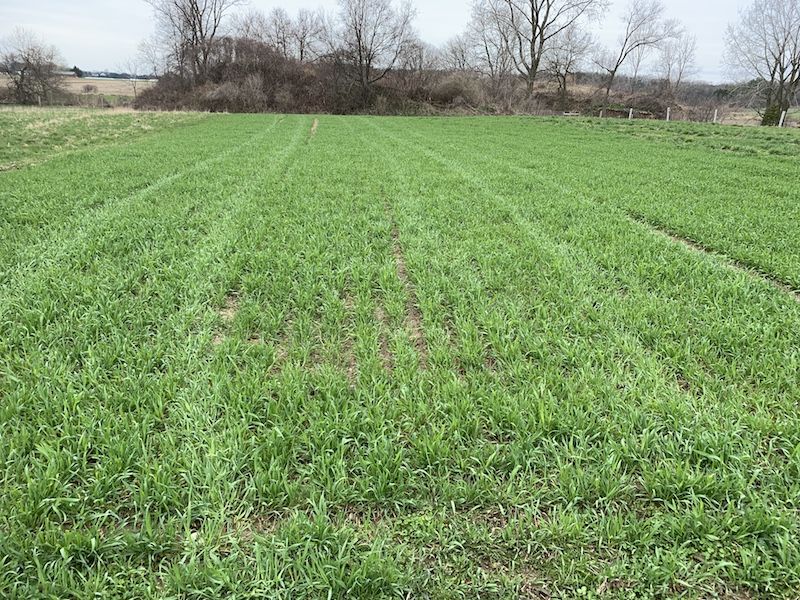
Winter rye just after spring top dressing with 1 ton/ac of organic pelleted layer manure. The rye will be roller/crimped for transplanting into in June 2020. Photo taken April 12, 2020.
MAY 2020
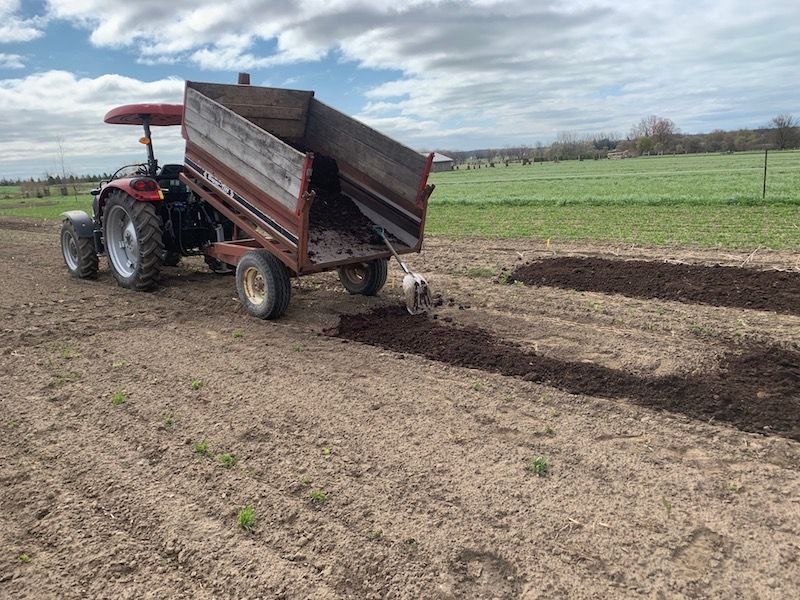
Spreading compost for deep compost mulch. Photo taken May 4, 2020.
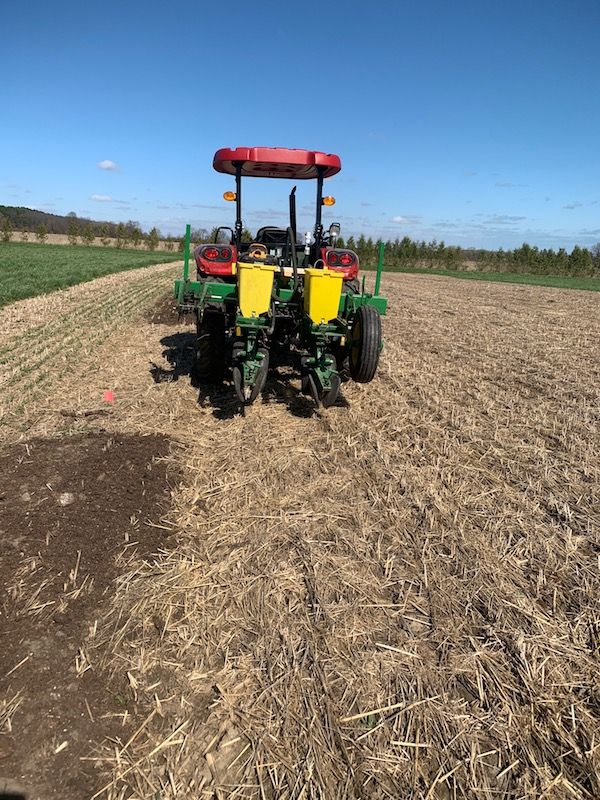
Planting spinach with the vacuum planter. Photo taken May 4, 2020.
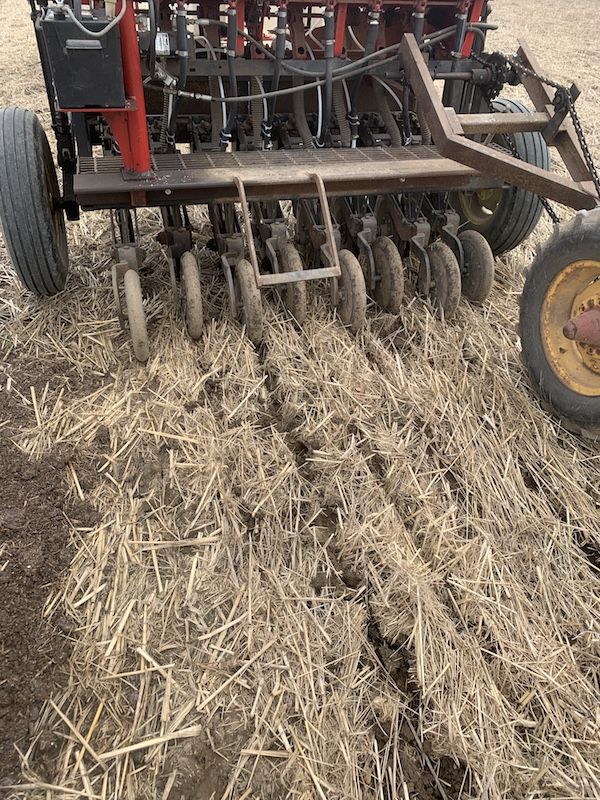
Drilling spinach in 6 rows, 8″apart. Photo taken May 5, 2020.
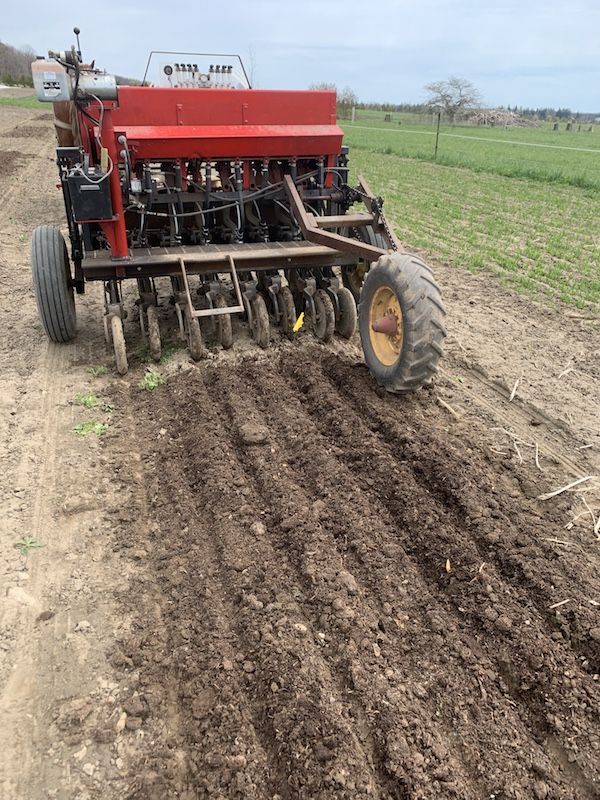
Drilling spinach part 2: you can see 8 openers, with the outside 2 blocked off. The bed on the left is winter-killed sorghum-sudangrass and the bed in front is deep compost mulch on top of winter-killed daikon.
JUNE 2020
Planting peas into deep compost mulch with 2-row vacuum John Deere planter.

Left to right: spinach drilled into winter-killed daikon, winter-killed daikon plus deep compost mulch and deep compost mulch on tilled soil. Planted May 5; photo taken June 7, 2020.

Best plot of peas planted with no-till planter into deep compost mulch (1/4 wood chips; 3/4 compost) on top winter killed sorghum-sudangrass with no mechanical or hand weed control. Planted late March; photo taken June 7, 2020.

